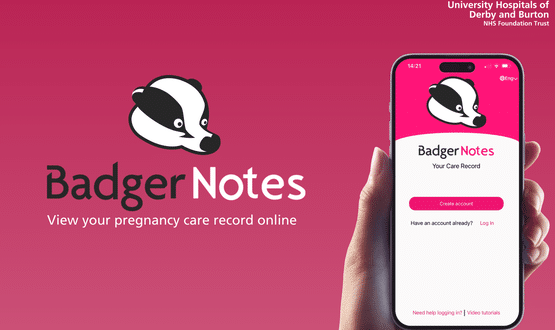Health CIO profile: Peter Russell
- 9 December 2014

Peter Russell’s formative years as a military man have stood him in good stead as a leader and innovator in healthcare IT. To illustrate this, he singles out his time spent on secondment to the US army.
“It meant learning a whole new set of skills in working with a wide range of people, and putting bridges in place between civilians and various military partners,” he says. “It helped prepare me for the many challenges we now face in the NHS – working with CCGs and other healthcare organisations in both the public and private sectors.”
Moreover, Russell says other postings during his 13 years as a commissioned officer in the British Army involved early uses of IT, which equipped him for the future. “My last role was helping provide support services for an air defence command and control system for use in European battlefields.
“Through projects like this I learned how to adapt to different circumstances; for instance, when to challenge and when to concede; and the importance of having a clear, overall vision of what you intend to deliver.”
Nor did Russell twiddle his thumbs between leaving the army in 1993and moving to Civvy Street. “I used those 18 months or so to build my own house. I wouldn’t call it Grand Designs, but we’re still living there, so I must have made a reasonably good job of it,” he jokes.
Career change
Russell’s initial employment outside the military was as customer services manager at Test Valley Borough Council. After that, he entered the NHS for the first time in 2000 as head of IT at Salisbury NHS Foundation Trust, a position he held for almost ten years.
“It was a very stimulating place to work, with a wealth of in-house IT skill and lots of innovation going on,” he says. “For instance, they had already introduced e-discharging as early as 1996, way before most people had even thought about it.
“During my time there we put in one of the first iSoft patient administration systems and began driving real clinical benefits by bringing in results electronically.
“But as a director of IM&T, you eventually find yourself repeatedly fighting the same battles, so it makes sense to change organisations occasionally in order to make yourself heard again. I therefore jumped at the chance to join Nottinghamshire Healthcare NHS Trust as head of health informatics in 2009.”
Here Russell led a 100-strong team delivering services ranging from technical and information to knowledge management for some 8,800 staff, with an informatics revenue budget of £7m.
“We did a lot with RiO electronic patient record technology, producing the first e-discharge to the national standard for mental health and delivering it to GPs throughout Nottinghamshire,” he says.
“This was a really cool piece of work and involved doing what I enjoy most – working with technologists, the Royal Colleges and clinicians to develop a set of standards and then delivering those in practice to improve the outcome for patients.
“I was also involved in several integrated care projects in Transforming Community Services work around that time. We did a lot around mobility both within the organisation and out in the community, which made a vast difference to the way patients perceive their treatment, as well as to trust staff and GPs.
“There’s a lot bandied about around more responsive and cost-effective services and the benefits of providing the right information to the patient at the right time; but it’s really gratifying to hear patients and GPs say to your face what a change it’s made for them.”
Rewarding challenge
Russell’s next move was to Great Western Hospitals NHS Foundation Trust where, as interim director of IM&T, he steered the upgrade of an acute system to a full EPR record and deployed community IT solutions across several community hospitals and teams; as well as upgrading network, wi-fi and server infrastructures.
He says his time at GWH has been very rewarding. “I went in there initially on a three-month assignment to help implement a major upgrade of their Medway PAS/EPR system and ended up staying around 18 months.
“Although they had already been using the system for many years, this was more than just an upgrade – more a total PAS replacement, which is now working well as an EPR. They had been working on the implementation for about six months when I arrived and it took around nine months more to make it a safe and seamless.
“For instance, the emergency department was paper-driven at the time, so we made it very paper-lite using a Medway ED module; this manages all clinical and administrative aspects of emergency care. It collects clinical data throughout an episode including medical history, diagnoses, medications, investigations and treatments.
“It means clinicians can now use Microsoft Surface tablets in cubicles with patients not only to register where they are in the care pathway, but also to look at results, view picture archiving and communication system images and place orders.”
Russell says he also put in a bid on behalf of GWH for funding from NHS England's ‘Safer Hospitals, Safer Wards: Technology Fund’ to support the implementation of an electronic prescribing and medicines administration system.
“As a result, the trust was awarded £250,000 and will shortly begin implementing a pilot system,” he says. “I’ve been fortunate to have a great team behind me, which means they have a good trajectory to follow as I move on to my next post. I’m confident they will deliver a trust-wide implementation by springtime next year.”
Russell is also keen to stress the importance of integration within any trust. “For instance, our work in Swindon involves far more than just the acute side,” he says. “Great Western Hospital is an integrated organisation with community throughout Wiltshire, so we’ve spent a lot of time with the clinical commissioning group to replace the community EPR system.”
Firm foundations
Above all, Russell believes an essential skill of any CIO or director of IM&T is the ability to manage different components in order to achieve more value than their individual worth. “For example, Great Western Hospitals will now have an EPMA, which in its own right is very useful; but by combining that with the clinical record within Medway, it becomes vastly more useful,” he says.
“When you combine that with the trust’s comprehensive and scalable wi-fi implementation, plus the mobility element around using tablets, then the whole engagement between technology staff and clinicians becomes much more significant. It means you derive far greater overall benefit than that of each individual component.
“It also means that if the trust is successful in its tech fund bid, then the money won’t just be used to create something new, but to build on the set of firm foundations that have already been established to take the organisation forward.”
Russell says he now relishes the challenge of his next role as interim director of health informatics at Rotherham NHS Foundation Trust; which had a very difficult Meditech v6.0 implementation a few years ago.
“I’m looking forward to helping them develop further their clinical and organisational engagement and to working with them to fine-tune their IT strategy. My aim will be to help create an effective trajectory which can then be followed by whoever the Trust appoints permanently to deliver that,” he concludes.
| Fact box | |
| Name: | Peter Russell |
| Job title: | When interviewed: Interim director of IM&T at Great Western Hospitals NHS Foundation Trust. Now: Interim director of health informatics at The Rotherham NHS Foundation Trust. |
| Time last current role: | 18 months |
| Key project: | Recent successes include steering the upgrade of Great Western Hospital’s Medway patient administration system to a full electronic patient record; deploying community IT solutions across a number of community hospitals and teams; and upgrading network, wi-fi and server infrastructures. |
| Favourite technology: | “Any technology that supports better decision-making. Meanwhile, if someone can come up with an app that scrubs the bottom of my boat every week, I’ll be very happy!” |
| Best thing about job: | “What gets me out of bed in the morning is the rewarding feeling I get from leading a diverse team of technologists, clinicians and managers to deliver better services and thereby improve patient outcomes.” |
| Worst thing about job: | “The needs of communities differ from one to the next; one of my greatest frustrations is finding a solution that is better than the lowest common denominator when trying to develop better ways of working whilst maintaining the individuality of each community.” |




